#informative-animation
Explore tagged Tumblr posts
Text


This counts as vent art.
#art#my art#animation#the fucking tax people informed me that I've got an unpaid bill#I've paid it and the money left my bank account but doesn't show on their end#I tried to call them today to let them know they fucked up#AND THEY WON'T ANSWER THE FUCKING PHONE#PICK IT UP SO I CAN TELL YOU OF YOUR FAILURES
87K notes
·
View notes
Text
It's always so weird to come down from the biology heavens to see what the average person believes about animals, plants, ecosystems, just the world around them. I don't even mean things that one simply doesn't know because they've never been told or things that are confusing, I'm talking about people who genuinely do not see insects as animals. What are you saying. Every time I see a crawling or fluttering little guy I know that little guy has motivations and drive to fulfill those motivations. There are gears turning in their head! They are perceiving this world and they are drawing conclusions, they are conscious. And yet it's still a whole thing if various bugs of the world feel pain or if they are simply Instinct Machines that are Not Truly Aware of Anything At All????? Help!!!!!! How can you look at a little guy and think he is just the macroscopic animal version of a virus
#yesterday i made a complainy post about a whale edit having people confused about whale sharks and orcas' dolphin and whale identity#but honestly i cant even hold these things against someone. its confusing that whale sharks are called with two different animal names!#and if you only know about the whale dolphin porpoise divide then you may not know that dolphins and porpoises and others are toothed whale#i dont think anyone is actually stupid for not having this information preinstalled in their brains#if anything it makes me happy to get to explain things because i love explaining things that i know :D#however... this#it just makes me sad :(#its so weird when this whole thing is subjected towards OTHER VERTEBRATES too like fish or reptiles or amphibians#like man.... you are a fish. your ancestors were buddy buddy (or actually probably enemy enemy) with the ancestors of these guys#fish are like a whole other class of animal to a lot of people dont even get me started#they never get the same protections as mammals or birds do even if they are just as or more endangered#mmmmm i wont rant now#biology
15K notes
·
View notes
Text
Oh hell yeah my scrunklies be kissing
Errorberry relationship will always fascinate me, romantic or not
Bonus frames for u pretties :D!!
[Credits for the Ink image go to Comyet]



#art#my art#undertale#undertale au#fanart#sans#sans au#sans aus#utmv#errorberry#error and swap#can be seen as ship or platonic#bad sanses#nightmare sans#nightmares gang#murder time trio#dust sans#killer sans#horror sans#cross sans#ink sans#dream sans#swap sans#error sans#murder sans#blueberry sans#bad sanses poly#not shown but important information#star sanses#animation meme
3K notes
·
View notes
Text
ARE YOU hopelessly fixated on a specific fictional polycule and have way too much time on your hands? boy do i have an unnecessarily elaborate ship chart for you!
(versions with 3, 4, 6, 7, 8 characters and an example under the cut)
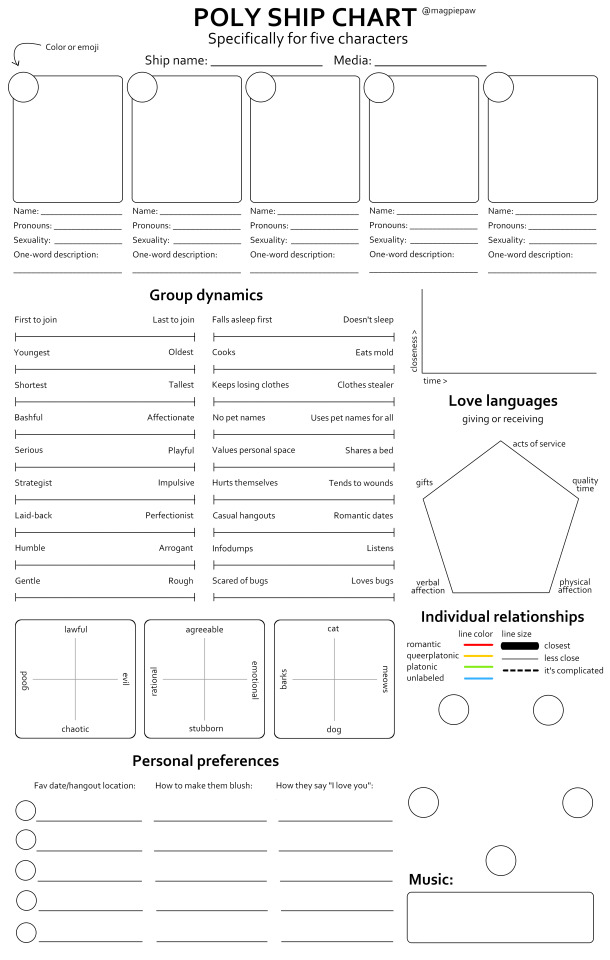
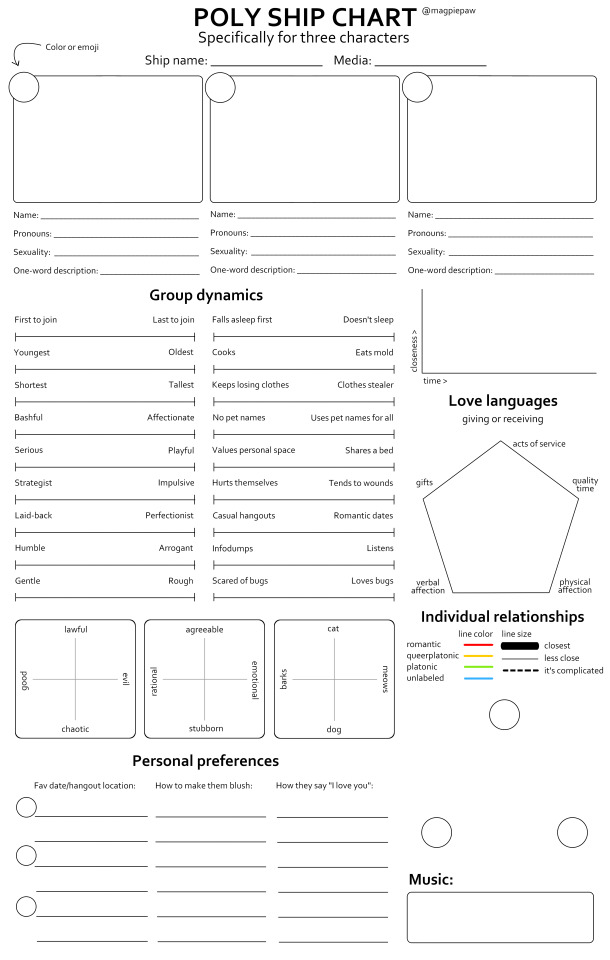


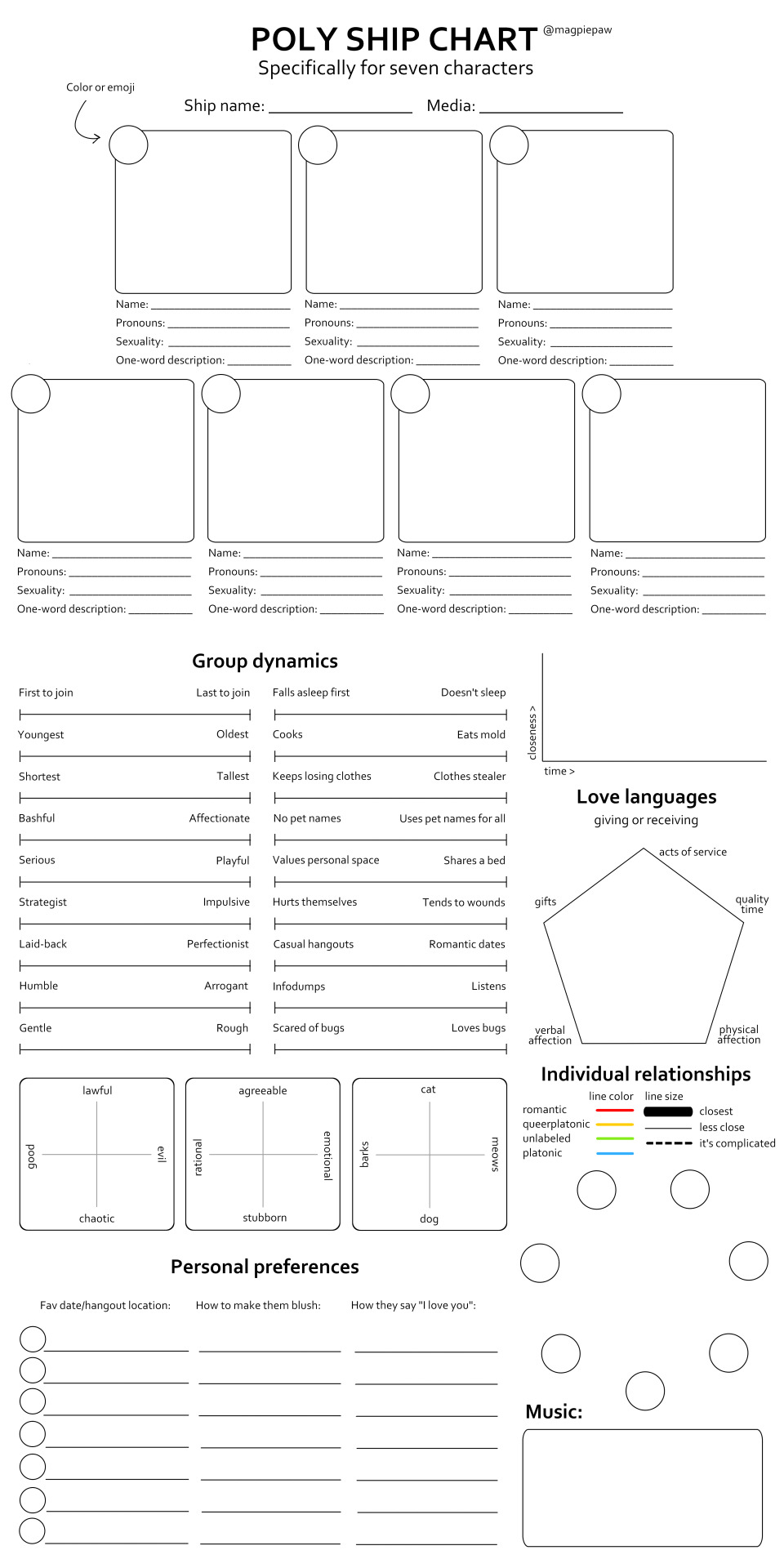
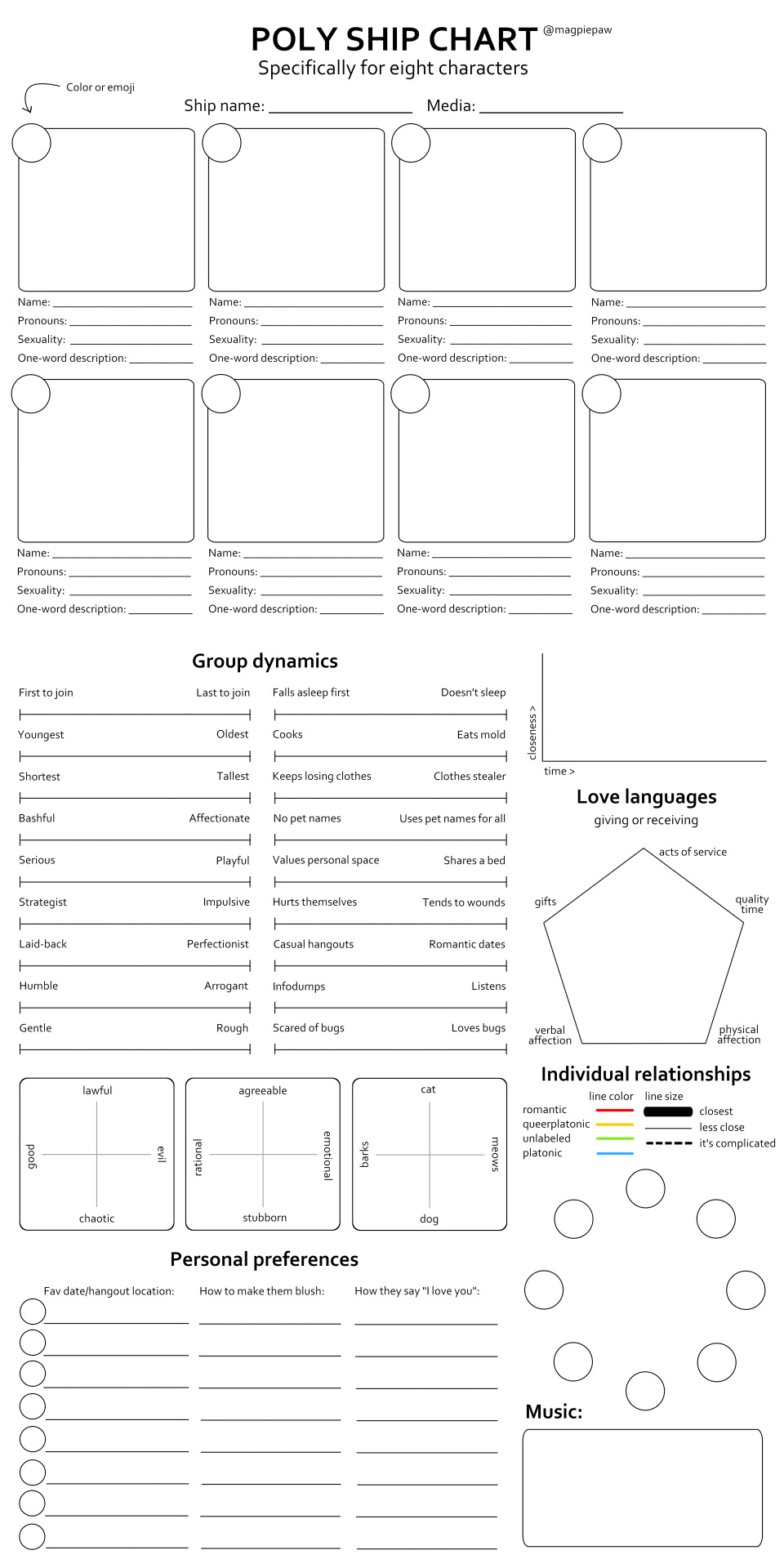
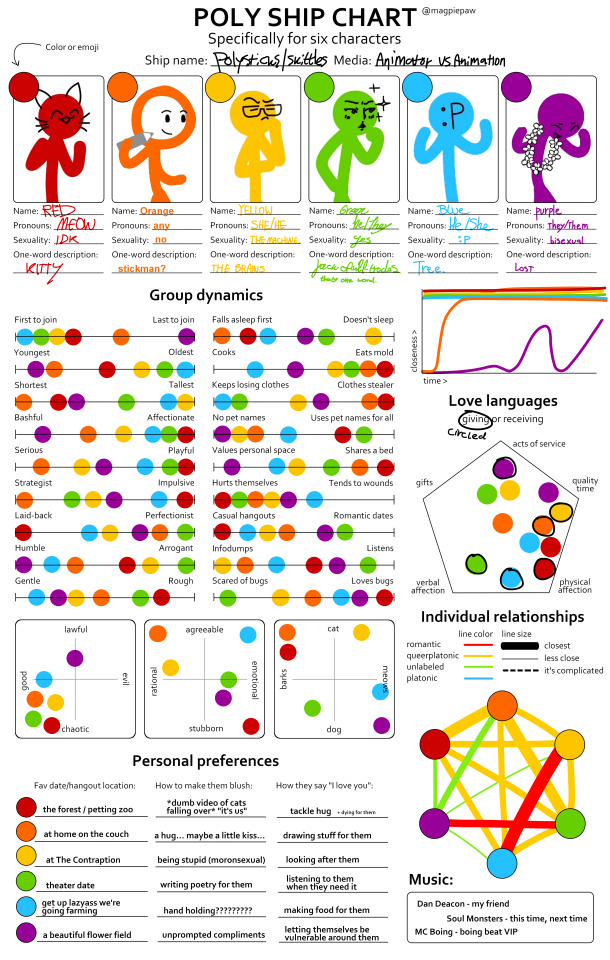
feel free to make any edits or add stuff to your liking :]
#ship chart#ship chart template#ship template#character chart#character template#ship dynamics#shipping#animator vs animation#animation vs minecraft#character dynamics#character info#character reference#ship information
4K notes
·
View notes
Text
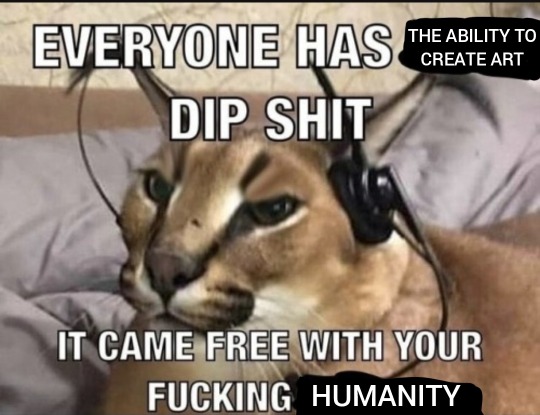
Learning to internalize the message above, but art is in all of our bones. If you feel afraid to create art because it won't be "good enough," it's worth it to explore why you feel that fear. Creating art is one of the basic impulses of people, and if you want to create art, then you absolutely must.
#art#positivity#described images#image description in alt#i'm like 80% sure that's a lynx but i've never seen one irl#i'm going to weld this meme into my brain as i start crochet#maybe i have seen a lynx at the zoo actually. but that's beside the point and i haven't been to a zoo in years (sad!)#the zoos in my state are actually from what i understand VERY high-end and VERY good with their animals#which definitely makes me more willing to support them <3#i have been informed this is not a lynx btw#IN MY DEFENSE they look similar#thank GD tumblr unlike twitter lets you edit alt text. staff was real af for that (rare compliment i have for staff)
11K notes
·
View notes
Text
Wet Beast Wednesday: sea urchins
As I continue the slow grind of covering every living group of echinoderms for this series, it was inevitable that I would eventually encounter the only echinoderm I've actually studied. Sea urchins are among the most iconic of marine invertebrates, but many people just think of them as part of the scenery. I'm here to show you that there's more to these creatures than just being spiny lumps on a rock.

(Image: a purple sea urchin (Strongylocentrotus purpuratus) being held in someone's hand. It is a round, globular animal with a dark purple color. Light purple spines emerge from it all over its body, with the longest being around the middle. End ID)

(image: a long-spined sea urchin (Diadema savignyi). It is a black sea urchin with spines longer than its diameter. End ID)
Urchin is an old-fashioned word for hedgehog, and sea hedgehog is a fitting name for these round, spiny animals. Sea urchins tend to be fairly small, with a diameter of 3 - 10 cm (1 - 4 in), though some species have very long spines that make them seem larger. The main body of an urchin is round and enclosed in a (usually) hard shell called a test made of calcium carbonate. The test is covered with a slayer of skin and muscle that controls the spines and small, pincer-like structures called pedicellaria. Within the test are the internal organs. As with other echinoderms, sea urchins are radially symmetrical as adults, with five segments arranged around the center like pizza slices. The two main body holes are found on the top and bottom of the animals where the segments converge. At the bottom is the mouth and at the top is the anus. Each segment also has a hole near the anus used to release gametes and one will have a larger pore called the madreporite, which is used to control the amount of water within the urchin's body. The mouth is a unique structure known as Aristotle's lantern, consisting of five tooth-like structures (one for each body segment) that interlock together and sharpen themselves. Behind the teeth is a rasping tongue.

(image: a close-up of an urchin's mouth, showing the Aristotle's lantern. It is a hole surrounded by a fleshy lip. Five spade-shaped teeth are emerging from the edge of the hole. End ID)
Internally, most of the body is taken up by the digestive tract and water vascular system. The digestive system lacks a stomach, with the esophagus attaching directly to the small intestine. The digestive tract forms a loop as it passes through the body. The water vascular system uses seawater to form hydrostatic pressure that moves the tube feet. All starfish, urchins, and sea cucumbers have tube feet, small, transparent, tentacle-like structures they use for movement. Tube feet are hollow and retracted into pores on the skin normally. To be used, they have to be inflated with water, which makes them stick out of the body, where they can be controlled with muscles. Tube feet end in suction cups that can be used to grab into structures around them. Seawater drawn in through the madreporite serves as the source of pressure needed for the tube feet to function. In urchins, tube feet cover the body and are used for locomotion, moving food to the mouth, and moving objects on or off the body. The main body cavity is filled with circulatory fluid that uses special cells to move oxygen and nutrients around the body. The nervous system is simple, consisting of a central nerve ring around the esophagus that branches into nerves that connect to the rest of the body. Urchins have no eyes (except for the family Diadematidae, which have eyespots), but are sensitive to light. The gonads are usually small, but during mating season they can swell to fill much of the body cavity.

(Image: a drawn diagram showing a cross-section of a sea urchin, with the different organs and body parts labeled. End ID. Source)
Sea urchins are found in oceans worldwide, from intertidal zones to the deep sea and the tropics to the poles. They are bottom-dwellers who feed primarily on algae, which they scrape up with their teeth. However, they will also take a variety of food, including carrion, aquatic plants, and other slow-moving or sessile animals like sponges, polyps, bivalves, worms, and sea cucumbers. Urchins can play a key role in regulating algae populations through their ecosystems, but they also rely on predators to keep from overeating necessary algae. Famously, California's kelp forests were almost destroyed by urchins eating the kelp after their primary predator, sea otters, were driven to near extinction. Urchin's primary defense against predators is their hard tests and spines. As most of the edible portion of the urchin is within the test, predators have to get through both layers of defense first. The spines are hollow and each can be moved independently of each other, allowing them to be positioned toward a threat. Many species contain venom within their spines as an added layer of defense. This venom is rarely dangerous to humans, but can cause swelling and painful reactions. Another layer of defense is the pedicellaria, which are good at removing small animals and parasites from the skin. The flower urchin, Toxopneustes pileolus, has modified its pedicellaria into flower-like structures that extend beyond the spines and can deliver a sting that can be fatal to humans.

(Image: a flower urchin. It is a pinkish urchin covered with flower-like structures that extend to the length of the spines. It has placed some bits of shells on top of it. End ID)
Sea urchins possess distinct males and females, though the differences are internal, making it impossible to tell which is which based on visual examination. During mating seasons, the gonads swell as they generate gametes. Urchins tend to reproduce in groups at synchronized times (possibly correlated with the phases of the moon in shallow-water species) to maximize the possibility of fertilization. When ready to mate, the gametes are squeezed to empty their contents through the genital pores and into the water column. Sperm must find egg in the water to fertilize it. Most sea urchins provide no parental care, but in some species, the female will retain the eggs in her spines to protect them. The eggs hatch into bilaterally symmetrical larvae called plutei that drift with the plankton. As they develop, a section of the larvae will develop into a radially symmetrical adult rudiment. This piece will eventually break off and become the juvenile urchin while the rest of the larva dies. Because echinoderms start out as bilaterally symmetrical larvae, we can infer that they developed from bilaterally symmetrical ancestors and the radial symmetry of adults is a more recent development.

(image: a series of photos showing the embryological development of a sea urchin from a single cell to a cluster of cells, to a bell-like structure, to growing several arms, to the eventual adult developing and breaking off. End ID. Source)
Fossils show that the oldest sea urchins had large, club-like spines that they walked on, with the modern spines being a later development. Most of those urchins died out with the dinosaurs, leaving the pencil urchins of order Cicaroida as the only living members. All other living urchins are Part of the clade Euechinoidea. Amongst them, there are still some oddballs, known as the irregular urchins of clade Irregularia. These urchins have moved away from radial symmetry, with less symmetrical segments and the anus and mouth moving from being on the top and bottom to being on the sides in the heart urchins. Heart urchins have gone from bilateral symmetry to radial symmetry and are now going back to bilateral symmetry. Heart urchin mouths don't have an Aristotle's lantern. Instead, they use strands of mucus to capture food and cilia to pull the strands back inside. Sand dollars, also known as sea cookies or sea biscuits, are also in this clade. These are flattened urchins with short and very fin spines that resemble velvet. They are burrowers who spend much of their time buried under sand and as such are rarely seen alive. The name sand dollar comes from their tests, which are similar to old dollar coins and can often be found washed up on beaches. While still radially symmetrical, sand dollars also have a secondary form of bilateral symmetry, with a distinct front and back end that often look different. Irregular sea urchins also tend to have fewer gonads and associated pores than regular sea urchins.

(image: a red pencil urchin (Heterocentrotus mamillatus) nestled among coral. Instead of spines, it has a series of long, thick, red clubs. End ID)

(image: a purple heart urchin (Spatangus purpureus). It is an urchin elongated on one direction and with a few rows of long spines amongst short ones. On the surface facing the camera is a large hole that could be the mouth or the anus. End ID)

(image: a group of irregular sand dollars (Dendraster excentricus) partially buried in the sand. They are round, flat animals with a velvety covering of tiny spines. The are sticking out of the sand. End ID)
Sea urchins have been known to humans for as long as people have lived near the ocean. Stings can occur when people step on them and can cause pain and irritation, but are rarely medically significant. That being said, some people can have allergies to the venom, which could be a big problem. Spines left in the wound should be removed, as they can continue injecting venom. Urchins are a food source for people around the world, specifically the gonads, which are the only meaty part of the animal. The gonads are often marketed as roe or corals and can be eaten raw or cooked. Urchins are also used as a model organism in embryology due to the interesting and well-studied nature of their larval development. Urchins are vulnerable to pollution, habitat loss, and over-predation. Ocean acidification due to climate change poses a major threat to them, as it reduces the quality of their tests.

(image: tow sea urchins served as food. They are upside-down with the bottoms removed. The gonads are visible within as five orange, spongy structures that take up most of the body cavity. End ID)
#wet beast wednesday#sea urchin#urchin#sea urchins#echinoderms#invertebrates#invertiblr#sand dollar#heart urchin#pencil urchin#marine biology#marine life#biology#zoology#ecology#animal facts#informative#educational#image described
812 notes
·
View notes
Text
Fish of the Day
Today's fish of the day is the necklace carpetshark!

The necklace carpetshark, also known by the name varied carpetshark, and scientific name Parascyllium variolatum, is one of the best known carpet sharks in the genus Parascyllium. The scientific name draws from the latin word for spotted, referring to the white spots surrounding the body. Other than the Latin scientific name, this shark is known by many English names other than the two previously listed. In Australia, it is often referred to as: ring-neck catshark, or southern catshark. Despite sharing many features with catsharks, or ground sharks as they are sometimes referred, the Parascyllium genus nor the Parascylliidae family it resides in is considered catsharks, and this is why these names are often not used in classification.

Regardless of the naming structure, let's get into the location of this fish! Found around the coasts of Australia from 37 degrees South to 41 degrees South, around inshore waters. These sharks are known for their demersal lifestyle, living along the seabed. Living at a depth of 180 meters or higher the necklace carpetshark spends its nights over rocky coral reefs, kelp or seagrass beds, or sandy floors. During the day however, this shark shelters primarily in caves, although it can be found in camouflage along the seabed on rare occasions. This has led to these sharks being rarely seen by those not actively looking for them.

Necklace carpet sharks, like many of their relatives, possess a slender elongated body. With a maximum length of 91cm with most adults ranging 60cm-91, these sharks can be differentiated from their family members by the broad black markings that cover the gills, small spiracles, and smaller mouth than most. Their mouths possess 28 teeth along the top jaw, and 32 teeth along the lower. Their prey is primarily made up of shellfish along the seabed, which is caught as these sharks lunge at them from behind. These sharks are little predated on in adulthood, but on the rare occurrences, it is done by larger fish, sharks, or marine mammals in the area. Although, other than this eggs cases are often fed on by certain seasnails.

The reproduction of the necklace carpetshark is similar to that of its family. As an oviparous shark, eggs are laid outside of the mother, where they are then left to fend for their own to hatch, and then throughout its youth. Inside the mother, embryos feed on the yolk of its egg sack. Outside the mother, 2-3 eggs will be laid at a time with eggs being covered in 2-3 tendrils, which will anchor them to the sea bed, often during the summer months. After being laid, eggs will hatch within 12-39 days, with many of the juveniles being predated on per season. Eventually, once these sharks have gotten larger than 60cm, they are considered adults and develop sex characteristics, eventually going on to breed and lay their own offspring. Currently there are no known threats to the necklace carpet shark populations.

That's the necklace carpetshark! I hope everyone had a wonderful time reading about them!
#fish#fish of the day#fishblr#fishposting#aquatic biology#marine biology#freshwater#freshwater fish#animal facts#animal#animals#fishes#informative#education#aquatic#aquatic life#nature#river#ocean#Parascyllium variolatum#shark#carpet shark#carpetshark#sharks#necklace carpet shark#varied carpet shark#cat shark
569 notes
·
View notes
Text
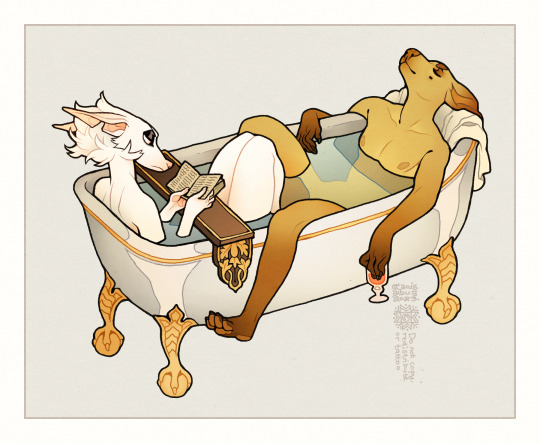
They need a bigger bathtub.
#this soup has more dog than water#own art#own characters#CanisAlbus#art#artists on tumblr#Machete#Vasco#anthro#sighthound#dogs#canine#animals#I also regret to inform you that clawfoot tubs like this aren't even remotely historically accurate for these guys#at the time bathtubs were made of wood or copper they were more oval in shape and they weren't elevated off the floor#but let me fantasize about fancy bathtubs at least for once
8K notes
·
View notes
Text

Helpful mnemonic for my beginner birder friends. Wow your companions with your confidence regarding identification of the families Anhingidae and Phalacrocoracidae!
#make saying ‘actually that’s an anginga’ a core tenet of your personality it’s not annoying to people at all I swear#psa#birding#birds#information#animals#cormorant#anhinga#bird identification PSA
2K notes
·
View notes
Text

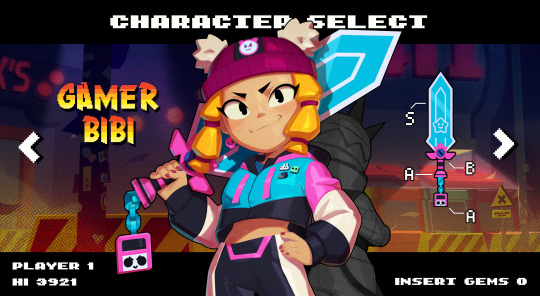


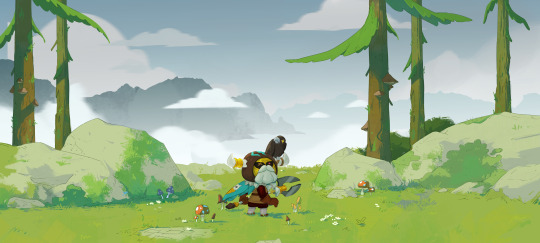
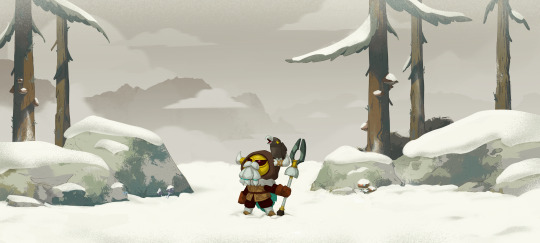

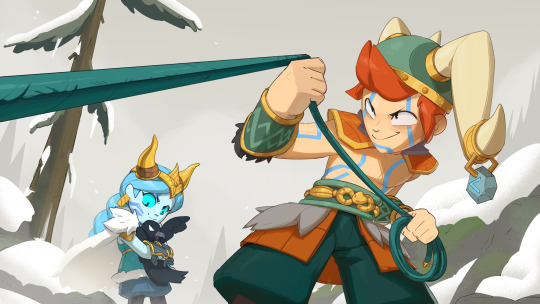
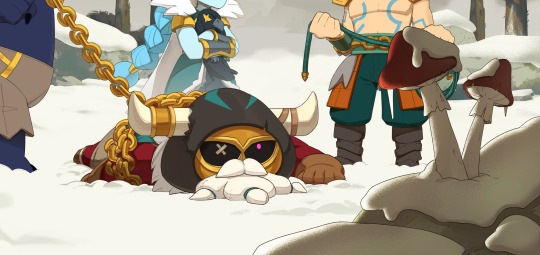


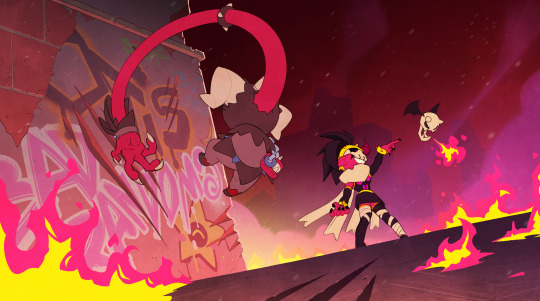





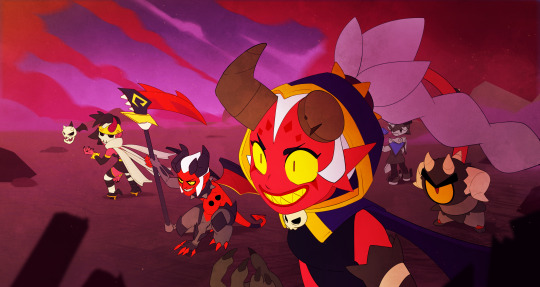

bro fuck it im workposting. i did illustrations, i storyboarded, i directed. I did many cool things in 2024 and millions of people all over the world saw em. that has to count for something
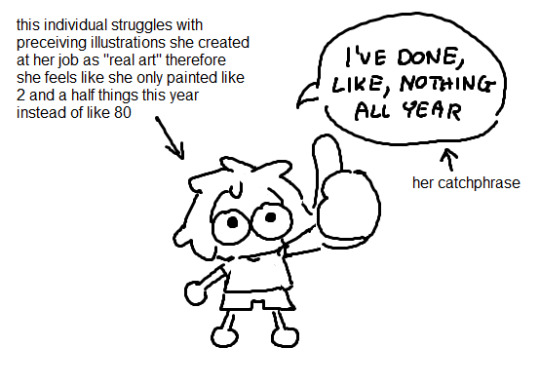
#brawl stars#marcia#i dont workpost because i am deeply aware nobody here is here for brawl stars but on god i#i work and i create and its real#and there is a part of me thats ashamed because i know that brawls is not. like its not league of legends you know?#league of legends is something you post about#about the skin you helped create or sculpted#or the splash art you painted#its has that... value that is obvious even in the eyes of a person who has never played league#its a very mature visual language that historically calls for respect#meanwhile presenting brawl stars art feels like showing my anime girl oc to an art teacher#even mentioning an illust i created for a skin announcement for brawl stars feels so#so dollar store#so laughable#like noone would take me seriously#it feels like when you say you're an artist and then a person asks to see your art#and you show them and they get that soft soft look in their eyes that informs you that they had an image of who an “artist” is in their hea#and that you did not live up to it but all they'll say is 'oh thats nice'#bro help me im doing art elitism to myself#how can i simultaneously believe that art can be anything and yet only neoclassical realism has real value#i want to be creatively free yet all i do is fear the unimpressed looks of strangers
691 notes
·
View notes
Text
New Millipede!!! Sphaerobelum turcosa is a newly discovers species of pill millipede that was recently discovered in the Loei province of Thailand. A team of researchers were doing field work in the Phu Pha Lom Forest when they discovered fourteen of these brightly colored millipedes. Due to their stunning coloration these pill millipedes were nicknamed “The Jewel of The Forest”.
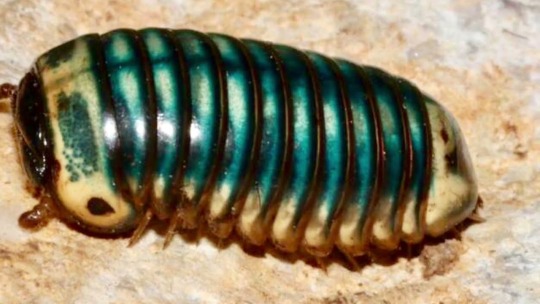
Pill millipedes have convergently evolved a body structure similar to that of isopods (aka roly polies) and have comparatively shorter bodies than other species of millipedes, and like roly polies they will roll themselves into a ball when they feel threatened.
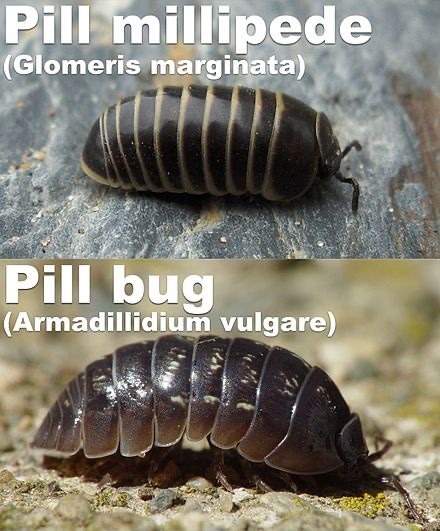
The bright turquoise color of Sphaerobelum turcosa helps warn predators that they are poisonous and not to eat them. This millipede also has tan markings on its exoskeleton that form a mask-like marking that helps to scare off potential predators.
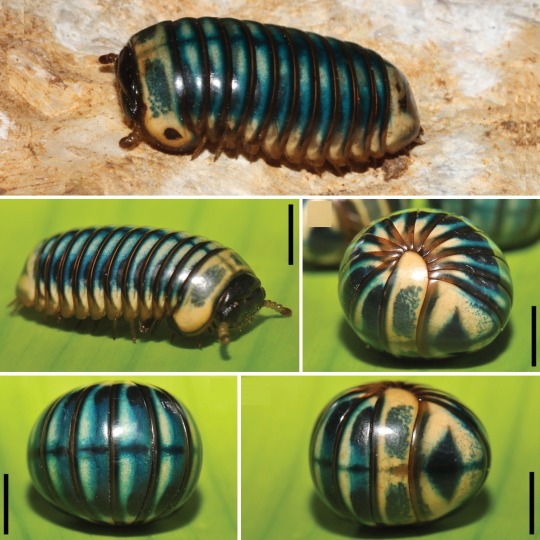
4K notes
·
View notes
Text
so the anime adapted this


but didn't adapt this...?
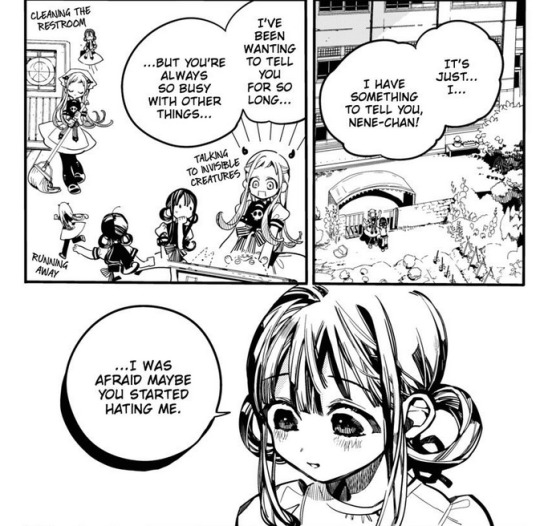
ok, sure, let's make the already most shallow friendship in this manga even more of a yuri bait.
#i am not surprised tho the anime doesn't really care about aoi#did you see how long/full of budget the 'hanako possesses Nene and harras Aoi' scene was? while they refused to add even a quick slide show#to inform the audience that Aoi being popular fucked up her life to the point of being harrased AS A TINY KID?#they already used her for the 'there are hands in these pictures' exposition in season 1 and her feelings has 'no use' for the main trio#so way it goes!#if empty fanservice is the goal of course it is better to leave 'the important thing she have to say!' hidden#and keep anything about 'boys want her' only jokey to make people not think about hanako's actions too hard#it makes so much sense that it makes me depressed.#if we do reach the grim reaper arc in the future i do not have much hope for how they'll treat aoi story#tbhk#toilet bound hanako kun#jshk#jibaku shounen hanako kun
427 notes
·
View notes
Text
When you first met Endo Yamato and Takiishi Chika you knew what you were signing for but didn’t expect this—pure chaos in the walk-in closet with clothes all over the floor, blouses and jackets were taken off the hangers, and looking at these two you got very confused ... Well, as you watched Endo search, Takiishi is just standing in the middle of it.
“What are you doing?” you asked, leaning against the doorframe, trying not to laugh at Endo, who had spoiled you shamelessly forever, and Takiishi, who was still interested in you despite his ever-shifting whims. “Looking for my hoodie,” Turning their heads to you as their eyes went wide, and you couldn’t figure out why until the tattooed man’s gaze locked on you, his mouth parting in realization. You followed his line of sight, suddenly self-conscious. Oh. You were wearing the hoodie.
He let out a sigh, finally calm that he found what he was looking for as he stood up and walked over to you. “Doll,” he drawled, his voice low and teasing, “you’ve got something that belongs to me.”
Your heart skipped a beat. Oh no. He knew. Not just about the hoodie, but the card. His precious credit card. You swallowed hard, your mind racing. Endo would never actually do anything to hurt you, he wouldn’t dare, but he’d made it clear you were supposed to ask him before using it. And you… definitely hadn’t.
“I didn’t mean to!” you blurted, practically tripping over your words. “It was just sitting there, staring at me! Like it wanted me to use it. And, well, I took the chance.”
He blinked at you, his expression slipping from teasing to baffled, turning to Takiishi, who remained as still as ever, blinking back at him with no intention of helping. “Well,” Endo finally said, his grin returning as he leaned in closer, his nose practically brushing yours, “I guess I can’t stay mad if you’re going to look that cute while confessing.”
Takiishi, watching from the sidelines, rolled his eyes. “You spoil her too much,” he muttered, walking off as if he was one to talk about being spoiled. You could only laugh nervously as Endo pulled you into a hug, saying something about princess privileges under his breath you knew that you were either cleaning this or your allowance was about to be shortened, but not for long. “You’re lucky I like you.”

©2024 kaiser1ns do not copy, repost or modify my work.
#✧* �� wind breaker#✧* ꜝ takiishi chika#✧* ꜝ endo yamato#OKAY I WAS ACC ABOUT TO DROP WBK BUT THIS MADE ME GET TO LIKE EDNO AND CHIKA AGAIN#anyway enjoy this made by endo and chika official character information <3#can't believe how spoiled chika is ... endo spoil me too please please please#to live with them would be so fun and exhasuthing because you have to clean after chika ... do you see this boy washing the dishes?? no.#ANYWAY WALKIN CLOSET / ENDO AND CHIKA SHARING CLOTHES / ENDO BEING RICH / CHIKA BEING A PRINCESS#wind breaker x reader#x reader#wind breaker#takiishi x reader#windbreaker x reader#wind breaker x you#windbreaker fluff#takiishi chika x reader#chika takiishi x reader#takiishi chika#takiishi#endo yamato x reader#endo yamato#endo#endo x you#wind breaker satoru nii#windbreaker x you#windbreaker manga#wind breaker manga#windbreaker#wind breaker anime#wind breaker x y/n
462 notes
·
View notes
Text
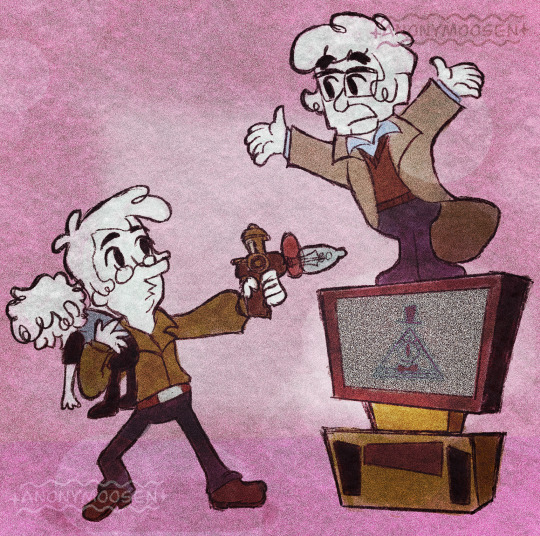
Guys I think I got the wrong Misterman Guyfella and Umbert Actually
Reference:

#YALL IT MAKES SO MUCH SENSE#FIDDLEFORDS ALSO VOICED BY ALEX#LIKE MISTERMAN / GREEN SHIRT GUY#GREEN GUY ALSO HAS A VIOLENT AND CRAZY SIDE#LIKE FIDDLEFORD AND HIS DEATH RAYS AND REVENGE ROBOTS#AND UMBERT IS JS LIKE FORD BC THEYRE BOTH INFORMATIVE NERDS OR SOMETHING#GREEN GUY EVEN HAD A SONNN#LIKE FIDDSSSSS#stand with animation#umbert actually#misterman guyfella#gravity falls#stanford pines#fiddleford#fiddauthor#in a way?#fiddleford mcgucket#ford pines#my art#art#gravity falls fanart#tate mcgucket#moosenarts#anonymoosen#bill cipher#kinda#fiddleauthor#Gravitimation falls
1K notes
·
View notes
Text

#giratina#the devil is so happy to see you#go give them a hug. this will not have any negative results#ugh now i'm thinking about the fuckin pokémon world mythology that was in the teraleak#so many mixed thoughts about that one. on the one side‚ that chart with the triangles and circles was never explained#except the fact that it just Showed up in the game. outside of the teraleak#but on the other it's like… well it was beta material for a reason. it was scrapped for a reason. for the same reason that like#y'know warabbit was in there. an unreleased pokémon. it's not canon#and i think i've accepted at this point that technically the only information we have that we can actually regard as canon is#anything that was released officially basically in the game or in the anime#and even then the anime is dubiously canon. i think it's got its own separate canon from the games anyway#not actually sure how the canon of the anime and the core series overlaps. i've never really watched anipoké
284 notes
·
View notes
Text

happy 6th (!!) birthday to the most beautiful woman in the whole world!!! 🌟
#4/20 LADS LIGHT ONE UP IN HER HONOR ITS WHAT SHE WANTS#ooooough i love my little girlie so much ❤️#she gets a little sassier each year but she is like. SUCH an easy dog.#gets along with all people and all animals. attentive but not annoying. great on leash and off. crate trained to a fault.#still a little barky and WILL inform you if she doesnt approve of something but that is ok <3 she is always correct#love you miss weewa#collie#rough collie#my pets#my photos#stellina
235 notes
·
View notes